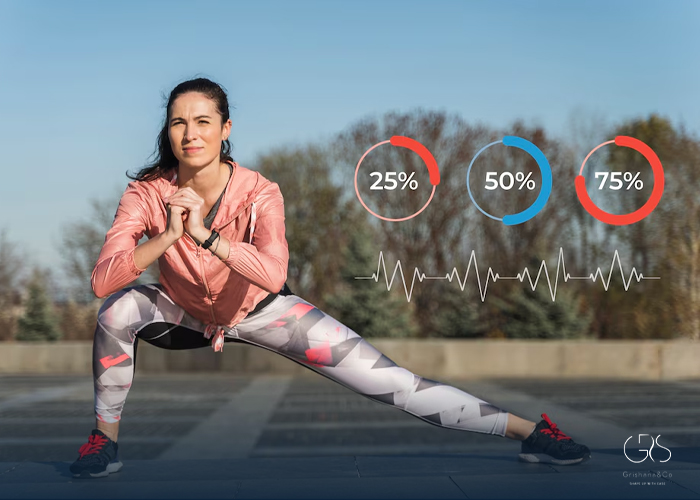In today’s health-conscious world, the debate over whether steps or exercise minutes is a more effective metric for tracking physical activity continues to perplex many individuals seeking to improve their fitness levels. Both metrics have their advocates, each arguing for their respective benefits. To shed light on this ongoing discussion, let us delve deeper into the comparison of step count and exercise minutes as well as the need for further research in fitness tracking technologies.
Comparing Step Count and Exercise Minutes
Step Count:
Tracking step count has become a popular method for monitoring daily physical activity levels. This metric is simple, easily measurable through wearable devices or smartphone apps, and provides a clear indicator of movement throughout the day. A study published in JAMA Internal Medicine found that individuals who aimed to achieve 10,000 steps per day had lower mortality rates compared to those who were less active.
On the other hand, some experts argue that focusing solely on step count may not encompass the intensity of the activity. For instance, climbing stairs or walking uphill can offer a greater cardiovascular challenge than simple steps on a flat surface. Therefore, solely relying on step count may not provide a comprehensive picture of one’s fitness level.

Exercise Minutes:
Alternatively, tracking exercise minutes offers a more direct approach to monitoring the duration of physical activity. Guidelines from organizations such as the World Health Organization recommend at least 150 minutes of moderate-intensity exercise per week for adults. By tracking exercise minutes, individuals can ensure they are meeting these guidelines and engaging in enough physical activity to promote health and well-being.
However, a potential limitation of monitoring exercise minutes is the subjectivity of defining “exercise.” Some individuals may consider brisk walking as exercise, while others may only count vigorous activities like running or weightlifting . This discrepancy could lead to inaccurate measurements of physical activity levels.

More Research on Fitness Tracking Is Needed
While both step count and exercise minutes have their advantages, further research is essential to determine which metric provides the most accurate reflection of physical activity and translates into tangible health benefits. Several studies have highlighted the need for more in-depth investigations into the efficacy of fitness tracking technologies.
A review published in the Journal of Medical Internet Research emphasized the importance of understanding the validity and reliability of wearable devices that track steps, distance, and calories burned. The study pointed out discrepancies in measurements among various devices, raising concerns about the accuracy of the data provided to users.
Another study in the Journal of Physical Activity and Health called for research focusing on the effectiveness of different metrics in promoting sustained behavior change. Understanding how step count or exercise minutes influence individuals’ motivation and adherence to physical activity recommendations is crucial for developing personalized strategies for improving fitness outcomes.
Choosing the Best Exercise Tracking Method for You
Ultimately, the decision of whether to prioritize step count or exercise minutes relies on individual preferences, goals, and lifestyle factors. Here are some considerations to help you choose the most fitting exercise tracking method:
- Behavioral Preferences: If you are motivated by achieving specific targets and enjoy the gamification aspect of fitness tracking, monitoring step count may be more appealing. On the other hand, if you prefer structured workout routines and setting aside dedicated time for exercise, tracking minutes might be more suitable.
- Fitness Goals: Consider your fitness objectives when selecting a tracking method. If weight loss is your primary goal, tracking calorie expenditure through exercise minutes could be more relevant. However, if improving overall physical activity levels is your aim, focusing on step count may be more beneficial.
- Lifestyle Factors: Take into account your daily routine, work commitments, and physical limitations when deciding on an exercise tracking metric. If you have a sedentary job and struggle to find time for formal workouts, tracking step count to increase incidental activity throughout the day could be a practical approach.
Conclusion
The debate between steps and exercise minutes as the preferred metric for tracking physical activity highlights the complexity of fitness monitoring. While both methods offer valuable insights into movement patterns and exercise duration, there is no one-size-fits-all solution. Individuals should consider their personal preferences, fitness goals, and lifestyle factors when choosing the most suitable exercise tracking method.
As the field of fitness tracking continues to evolve, it is essential for researchers and technology developers to conduct further studies that investigate the accuracy, effectiveness, and long-term impact of various metrics on individuals’ health outcomes. By combining scientific evidence with diverse perspectives, we can advance our understanding of the most effective ways to monitor and improve physical activity levels in today’s society.
Sources
- JAMA Internal Medicine Study, Association of Daily Step Count and Step Intensity With Mortality Among US Adults
- World Health Organization (WHO) Guidelines, Physical activity









